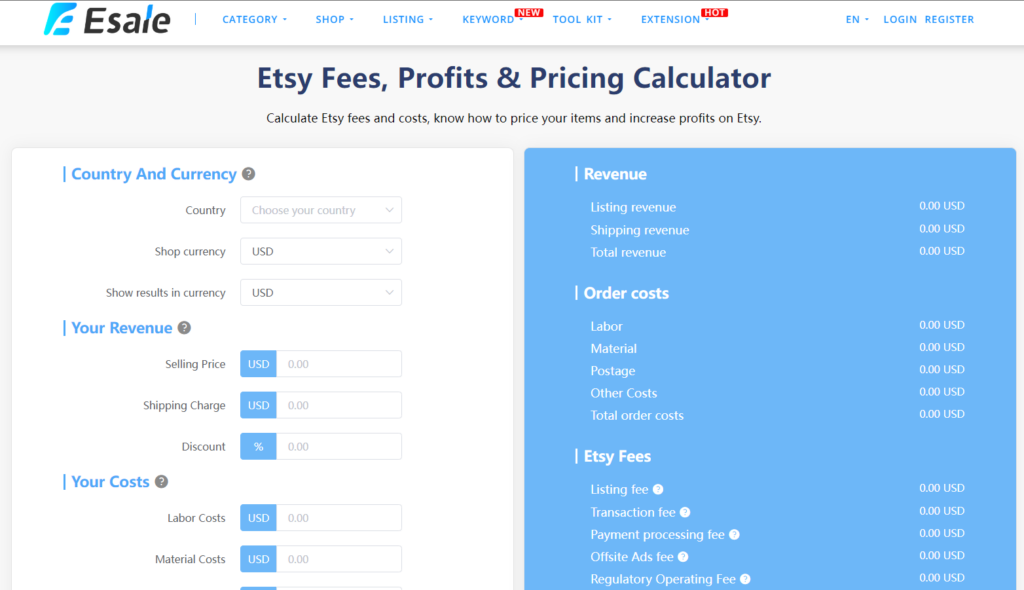How to price your Etsy items?

Etsy provides various fees and charging rules for sellers. Please note that Etsy's rules may change over time, so it's advisable to refer to the latest information on Etsy's official website or seller dashboard to understand the current fee structure. Below is a general overview of Etsy's seller fee rules:
- Listing Fee:Sellers are required to pay a listing fee for each item listed on Etsy. This fee is charged when adding a product to your shop and is based on the duration the item is listed.
- Transaction Fee:Etsy charges a transaction fee for each sale, based on a percentage of the total transaction amount, including the item price and shipping cost.
- Payment Processing Fee:Etsy uses payment gateways to process transactions. A payment processing fee is charged for each transaction, based on a percentage of the total transaction amount, including the item price and shipping cost.
- Currency Conversion Fee:If your shop operates in a currency other than USD, Etsy may charge a currency conversion fee for each transaction when converting funds.
- Advertising Fee:Etsy offers advertising services that allow you to showcase your products through Etsy Ads. You can set an advertising budget and are charged based on clicks for your ads.
- Optional Services Fees:Etsy provides various optional services such as custom web addresses, advanced seller tools, etc., which may incur additional fees.
- Payment Account-Related Fees:Depending on your chosen payment options, there may be additional fees, such as fees associated with accepting credit card payments.
Based on Etsy’s charging standards, how should merchants price their products?
The Etsy profit calculator is a tool designed to help Etsy sellers assess the potential profit from their product sales. The calculator automatically computes the expected profit based on the product's costs, selling price, and Etsy's fee structure. Below are the general features and usage of the profit calculator:
Key Features:
- Cost Input: Sellers can input the product's costs, including production costs, shipping fees, material costs, packaging costs, and other relevant expenses. These costs form the basis for profit calculation.
- Selling Price Input: Sellers need to input the selling price of the product, which is the intended price for selling on Etsy.
- Etsy Fee Input: The calculator typically requires sellers to input Etsy-related fees, such as listing fees, transaction fees, advertising fees, etc. These fees directly affect the final net profit.
- Profit Calculation: The calculator automatically computes the expected profit per transaction based on the input costs, selling price, and fees.
- Display of Net Profit: The calculator displays the expected net profit to the seller, aiding in understanding the net profit per sale.






